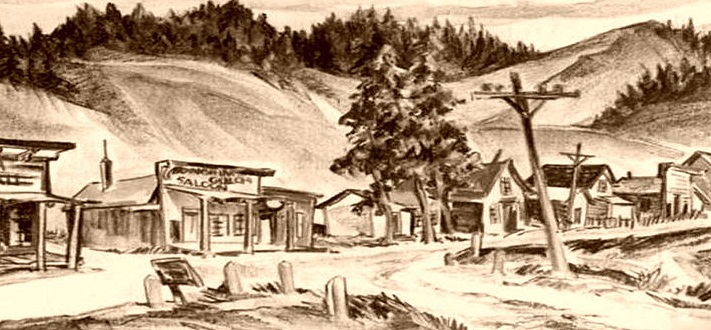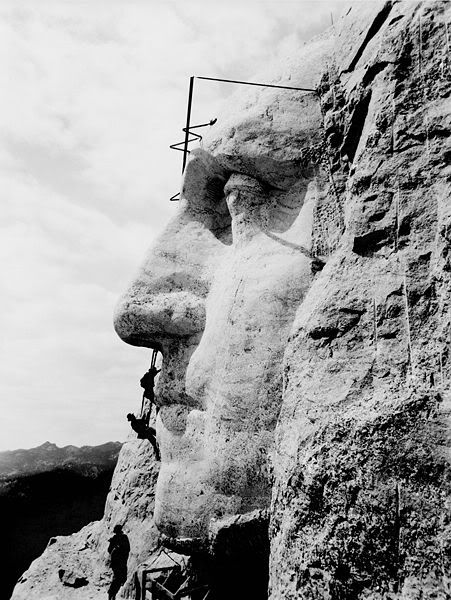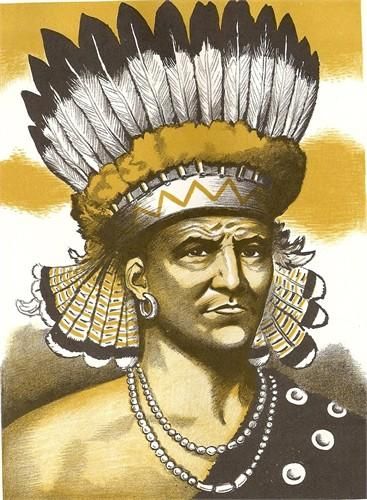The Theft of the Black Hills
During the second half of the nineteenth century, American policies regarding the “civilizing” of the Plains Indians called for them to be segregated in reservations where they could be trained to be Christian farmers. At the same time, non-Indians, obsessed with the idea of obtaining Indian land, strongly felt that because the Indians didn’t know how to farm, the good farm land on the reservations should be opened to non-Indian settlement. In addition, since Indians didn’t value gold, all mineral producing lands should be turned over to non-Indians so that it could be mined. Since it was imperative that Indians become Christians, sacred lands referred only to lands developed as Christian churches, while areas which had been sacred to Indians was simply considered vacant lands which needed to be developed.
By 1872, American settlers in the Dakotas were complaining loudly about the amount of land locked up in the Sioux Reservation. One newspaper wrote:
“The Indians can make no use of the country which has been set apart for them. The pine lands and mineral deposits are of no value to them, because they neither have the knowledge or inclination to utilize them.”
In 1873, the Dakota Territorial legislature asked the U.S. Congress to approve a survey of the Black Hills which would open this area up to exploitation and settlement. Following this request, General Philip Sheridan received permission from President Ulysses S. Grant and the War Department to build a fort in the Black Hills. Non-Indians assumed that the proposed fort was intended to protect them from the “hostile” Indians, while the Indians viewed this as an invasion of their sacred lands in violation of their treaties with the United States.
In 1874, President Ulysses S. Grant ordered Lt. Col. George Armstrong Custer to lead the 7th Cavalry in an expedition to explore and map the Black Hills. Officially, the purpose of the expedition was to find a suitable location for the fort, but in addition it was to examine the topography, flora, fauna, and geology of the Black Hills. The expedition had 900 men and three Gatling guns.
In addition to soldiers, Custer brought along some miners to help determine if there was gold in the area, and journalists who could quickly let the public know if there was any hint of gold in the area. When the miners reported that they found gold, the journalists sent out reports that fired imaginations regarding easy wealth. With regard to the gold Custer claimed to have found, Professor Newton Winchell, the geologist from the University of Minnesota who accompanied the expedition, doubted that any gold had actually been found. He claimed that the gold which the miners showed-gold which was worth no more than two dollars-was actually gold which they had brought with them to plant in the area.
Regarding the development of the Black Hills by non-Indians, expedition member James Calhoun wrote:
“For the hives of industry will take the place of dirty wigwams. Civilization will ere long reign supreme and throw heathen barbarism into oblivion; … Christian temples will elevate their lofty spires upwards towards the azure sky while places of heathen mythology will sink to rise no more.”
Concerning Indians in the Black Hills, Custer declared that the
“Black Hills region is not occupied by the Indians and is seldom visited by them. It is used as sort of a back-room to which they may escape after committing depredations.”

The army, reflecting Custer’s opinions, felt that if the Sioux were allowed to retain the Black Hills, they would use the area for staging raids against American settlers and miners.
With the exaggerated reports of gold, companies quickly formed for an assault on the Black Hills. There was little concern as to whether or not this would be permitted by the government: in the past the discovery of gold on Indian lands had always led to governmental abrogation of any Indian rights.
Not all Americans, however, were in favor of exploiting the gold in the Black Hills. Episcopal bishop William Hare warned of dire consequences. Hare insisted that the expedition into the Black Hills would violate the country’s honor. The bishop was one of a number of prominent people who voiced their opposition to any gold rush that would violate the terms of the Indian treaties.
In 1875, the Army under the command of General George Crook made a reconnaissance of the Black Hills and found at least 1,200 miners in the region. The miners were ordered to leave, but there was no effort to enforce the order. In his official report, Crook states:
“Now, when I visited the Black Hills country and conversed with the miners in regard to vacating, and reminded them that they were violating a treaty stipulation, it was but natural that they should reply that the Indians themselves violated the treaty hundreds of times every summer by predatory incursions, whereby many settlers were utterly ruined, and their families left without means of subsistence, and this by Indians who are fed, clothed, and maintained in utter idleness by the Government they, the settlers, help support.”

A photograph of gold miners in the Black Hills is shown above
The Commissioner of Indian Affairs appointed a special commission to go to South Dakota to meet with the Sioux and obtain the Black Hills. The commission was headed by Senator William B. Allison of Iowa and was thus known as the Allison Commission. In general, the members of the commission had no qualifications for negotiating land cessions from Indians. The government proposed that either the Indians sell them the Black Hills for $6 million to be paid in 15 annual installments, or to lease the mining rights to the area for $400,000 per year. In their response to the proposal, the Sioux leaders, particularly Red Dog and Red Cloud, insisted that it must provide for the next seven generations of their people. The Allison Commission failed to obtain the Black Hills for the United States.
The American government brought Sioux chiefs Red Cloud and Spotted Tail to Washington, D.C. to discuss the Black Hills. The government hoped to persuade the chiefs to relinquish the Black Hills. When the subject of the Black Hills came up, Red Cloud got upset and explained that he had come to Washington only to lay his grievances before the President, not to discuss the Black Hills. Red Cloud told the Commission of Indian Affairs:
“The white men tell me lies, and I became so troubled I wanted to come to Washington and see the Great Father himself and talk with him. That is why I have come to see you.”
When the Sioux delegation met with President Ulysses S. Grant, they were all dressed in full paint and feathers. The President was somewhat cool to the Indian leaders. While he said he was glad to see them, he would not talk business with them. The Sioux were not pleased with their meeting with the President. In their discussions with the Indian Office, the suggestion was again made that they should consider moving to Oklahoma.

The Red Cloud delegation is pictured above.
Although United States law (the treaties with the Sioux) prohibited Euro-American occupa¬tion of the Black Hills in South Dakota, President Ulysses S. Grant, in a secret November meeting with the Secretary of the Interior, the Secretary of War, Lieutenant General Sherman and Brigadier General George Crook, brushed aside any treaty obligations to the Sioux and ordered “no further resistance shall be made to miners going into [the Black Hills].” In December all Sioux nations were ordered onto reservations away from their sacred Black Hills, and away from the gold coveted by the Americans. According to the government, the decision to require the Indians to be on the reservations was made to protect reservation Indians from non-treaty Indians.
The United States declared war on the Sioux in 1876. The Sioux had to relinquish the Black Hills or starve. Congress passed an act which provided:
“hereafter there shall be no appropriation made for the subsistence of the Sioux, unless they first relinquish their rights to the hunting grounds outside the [1868 treaty] reservation, ceded the Black Hills to the United States, and reached some accommodation with the Government that would be calculated to enable them to become self-supporting.”
The United States issued an ultimatum to the Sioux: all of the bands were to report to their agency by January 31, 1876 or be considered hostile. This was an impossible order: Indian bands did not usually move in the winter, and second, word would not necessarily reach the off-reservation groups. The army then launched a three-pronged pacification campaign against the “hostiles” who have refused to come in. While the military campaign met with defeat at the Little Bighorn where Lt. Col. Custer and his men were killed, the relentless army troops attacked Indians-any Indians, not just the Sioux-where ever they could find them on the Northern Plains.
With regard to public relations and non-Indian propaganda regarding the Black Hills, Colonel Richard Dodge’s 1876 book, The Black Hills, declared that the Black Hills had never been the permanent home for any Indians. He also felt that the Sioux don’t really want the area.
In 1877, the Sioux met in council with the government to sign an agreement which relinquished the Black Hills to the United States. Among the chiefs attending were Red Cloud, Red Dog, Old-Man-Afraid-of-His-Horse, Young-Man-Afraid-of-His-Horse, Little Wound, and Sitting Bull (Oglala). The speeches made by the chiefs at the signing clearly indicated that they neither understood the terms of the agreement nor that they had any intention of abiding by its terms. The new agreement ignored the provision in the 1868 treaty which required three-fourths of adult Sioux males to sign any land cession agreement. Instead, the chiefs and two head men from each tribe signed. At this time, neither Congress nor the American public was in a mood to be bound by legal technicalities.



